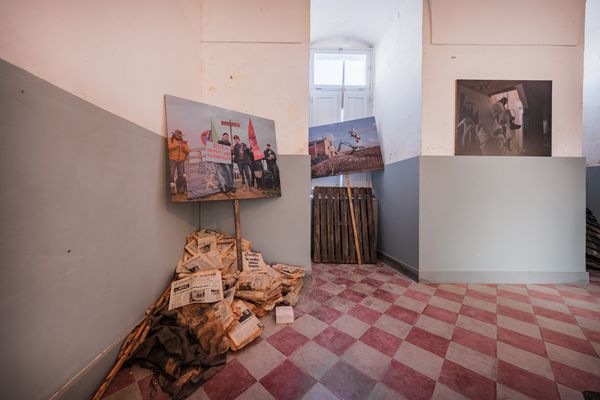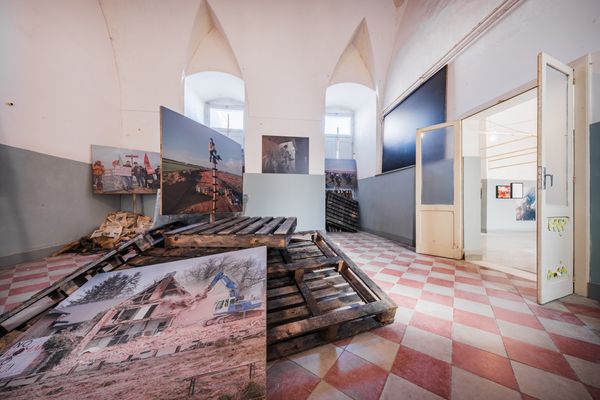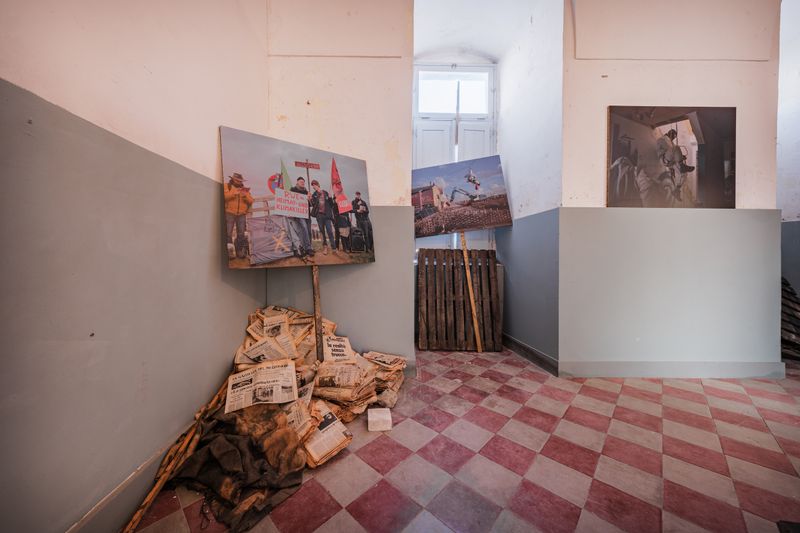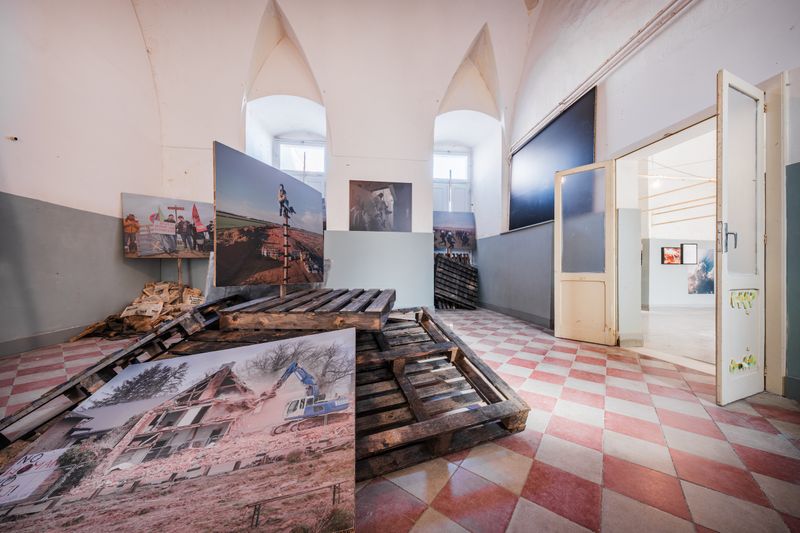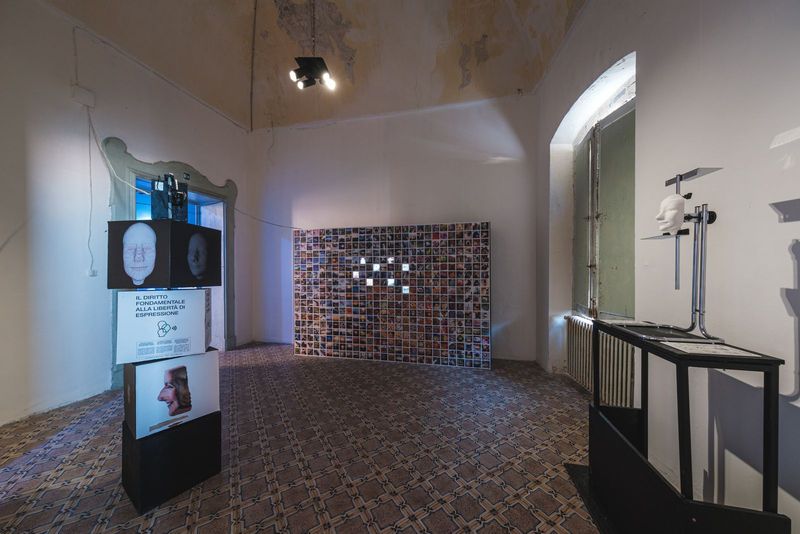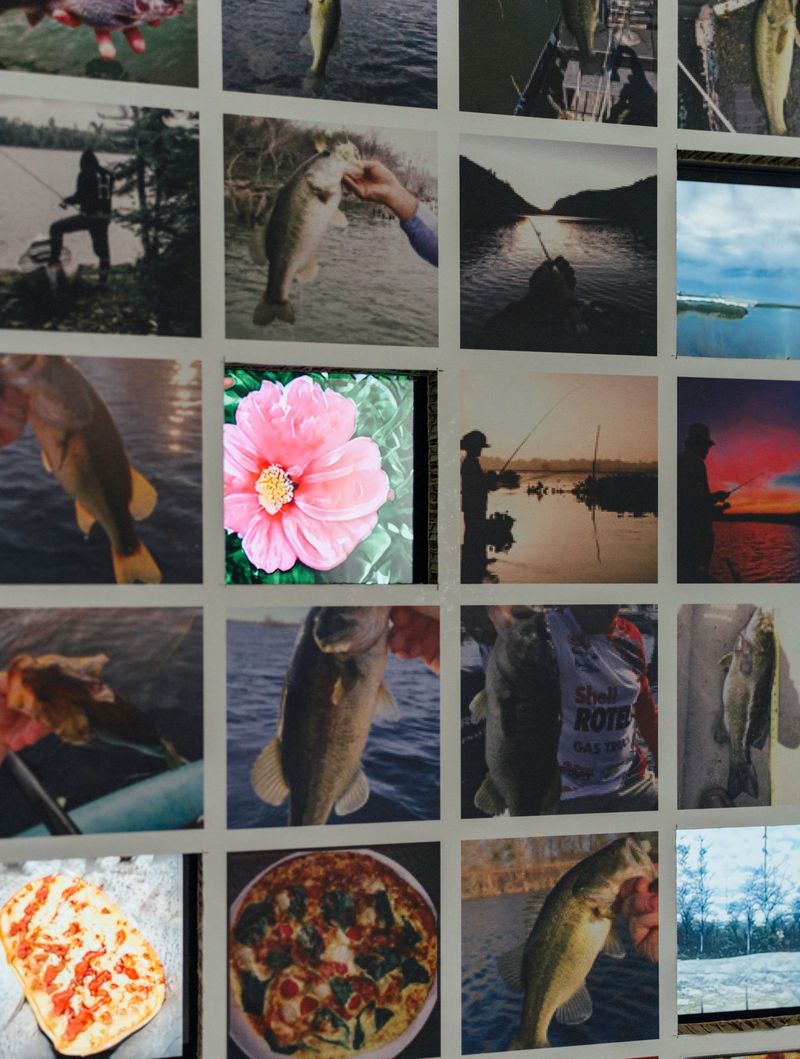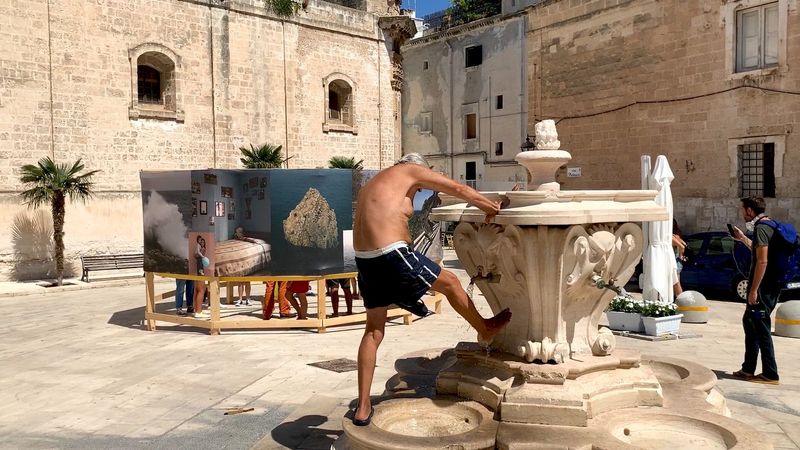The City as an Open Museum: Arianna Rinaldo and Giovanni Troilo on PhEST
-
Published19 Feb 2024
-
Author
Sustainability, a hands-on approach, and a close tie with the town of Monopoli are at the core of the Italian festival, always searching for work that can surprise, move, or provoke.
The collaboration between PhEST and the PhMuseum Photography Grant has been running since 2019, every year bringing one artist to exhibit in the Apulian town. The works of Liza Ambrossio, Jacob Balzani Lööv, Nancy Floyd, Marcel Top and Ingmar Björn Nolting have been the subject of unconventional installations, always aiming at crossing borders and resonating within the rich, complex environment PhEST is rooted in. With applications closing this upcoming Thursday, we met Giovanni Troilo (PhEST’s co-founder and artistic director) and Arianna Rinaldo (co-founder and photography curator) to discuss their methodology, selection criteria, and sources of inspiration.
Curating exhibitions for a festival is different from working in a gallery or museum. What have you found in this format and how do you think it can be beneficial for artists?
The festival format is a much more informal, open and shareable experience. In the case of PhEST, as many other festivals, the city becomes an open museum, with both indoor and outdoor exhibitions, and engages a much wider audience. We are very interested in attracting viewers that might not be primarily interested in visual arts but get involved by the presence of art works and installations within an environment that for them, at that time of the year, is mainly meant as vacation and leisure. Artists are thus exposed to many more eyes, and will possibly touch the hearts of many with their stories, reach farther with their projects, whether its from a professional point of view or more personal: the resonance of an art work is unexpected when you offer it to a wider spectatorship.
Can you guide us a bit into your thinking process when designing a show? How do you work towards the installations visitors can enjoy at PhEST?
As artistic director and curator of photography, we work together, remotely, throughout the year. A theme is on our minds, we let it sink in and start creating endless wish lists of projects, ideas, dreams. In the meantime, with managing director Cinzia Negherbon, we revise the status of the locations which are mostly spaces that are not used throughout the year or are historically and artistically delicate and precious; we rethink installations possibilities and start the complex logistics process, including fundraising: all aspects of the festival organization which remain in the background but are crucial to the final result. The creative selection, artist contact, institutional interaction and the many layers of structural management go hand in hand. Once we are flowing, and this is usually in the last months before the actual opening, we concentrate on the shows design and ideas, which we strive to create as original and alternative as possible, while also keeping an eye on sustainability and recycling/upcycling of material from previous editions. The magic happens when the whole team, including artisans, technicians and production assistants, which join us a month before it all begins, meets up and we start out hands-on approach. We envision ideas in our heads and on paper, but in reality, the best results appear when we are on site and put head, hands and hearts together (and budget of course!). There is a strong relationship with the mood of the region and the characteristics of the actual locations in finalizing the installation setups.
Last year, Ingmar Björn Nolting was selected from the Photography Grant to show his work Eviction in Monopoli. What were the main curatorial choices that led to the final shape of his exhibition?
Last year the theme was Being Human, and Ingmar’s work on resilient climate defenders inspired a strong idea. We included his work in Casa Santa, a relatively “new” location for us which is an old orphanage with an interesting courtyard and wrap-around structure. Ingmar’s work was shown together with other artists that were all dealing with “human” issues related to society: environmentalism, migration, prostitution, and our relationship with the virtual world. Each work was very different, and so the installation had to reflect their independences between one another.
In his images there were many wooden pallet structures, and that sparked the idea to use this element as central to the exhibition. It had to be messy, our of order, reflecting the situation of a group protest, but at the same time offer great visibility to the images which were in large format, but printed on honeycomb cardboard, rather than “plastic” material, to respect the climate issues it brought forward.
What do you usually look for in a body of work, and what criteria or ideas do you follow when making your selection?
We look for original stories, we want emotions, we want to be surprised, moved, or provoked by what we see, in the hope that our audience will experience something similar. We are open to all genres, are intrigued by original ways of storytelling and do not shun from street art, video, AI or mixed media as long as the concept is understandable and relatable. There is no fixed criteria in the selection process, as we are the first that want to be fascinated by the works. Certainly, when finalizing the complete selection we do take in consideration the variety of themes and styles, trying to be more comprehensive when possible, crossing borders and looking beyond. While selecting projects, we always have in the back of our head a possible installation idea, which might become reality or not at the end, because it is an essential aspect of PhEST’s DNA since its inception 9 years ago.
Thinking of you as a spectator, is there one exhibition you have seen in your life that you think had an impact on your work as a curator? In general, how do you gather references and inspiration?
We are lucky to be able to continuously travel, physically and virtually, so inspiration is really never ending. Not only via other shows or festivals but also simply by looking around us. Lights, surface, walls, illustrations, books, movies, social media, there is really no limit to what allows the ideas to spark. A simple trip to a DIY shopping center can inspire us to use different materials or find alternative solutions to our installation structures! We are also always inspired by Monopoli itself, such a natural stage for art, so we are on the look out for new ways to interact with it, while respecting its historical spaces and seaside beauty.
You can find out more about Jacob Balzani Lööv's and Liza Ambrossio's exhibitions at PhEST looking at these video interviews we conducted in Monopoli.
--------------
The PhMuseum Photography Grant has established itself as a leading prize in the industry over the last 12 years, renowned for recognising the importance of contemporary photography and for supporting emergent artists through cash prizes, exhibitions at international festivals, educational activities and exposure on online media. Among several institutions, PhEST will offer a new solo show to one work selected from our open call. You are welcome to present your work before 22 February 2024 at 11.59 pm (GMT). Learn more and apply at phmuseum.com/g24
PhEST is a festival founded in Monopoli, Italy, dedicated to photography, cinema, music, art, and contaminations. PhEST has entrusted the artistic direction to Giovanni Troilo and the photography curatorship to Arianna Rinaldo.
